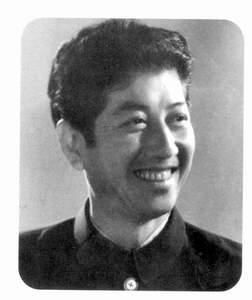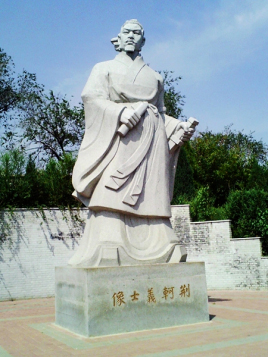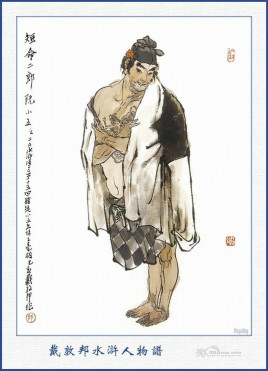门德尔松的哪部音乐作品是为了纪念路德的宗教革命而作?
《第五交响曲》。
门德尔松的《第五交响曲》1830年完成。为纪念奥格斯堡会议三百周年而作。
1530年,马丁·路德在奥格斯堡神圣罗马帝国会议上宣读了路德宗的基本教义,又名“奥格斯堡信纲”。由于天主教的反对没能上演。作者自己认为是失败的作品,所以他在世时没有出版,死后出版。乐曲采用一些宗教赞歌为素材,如第一乐章中的《德累斯顿阿们》,末乐章中的《上帝是我们的坚强堡垒》等。
作者简介
雅科布·路德维希·费利克斯·门德尔松·巴托尔迪(德语:Jakob Ludwig Felix Mendelssohn Bartholdy,1809年2月3日—1847年11月4日),简称门德尔松或费利克斯·门德尔松。德国犹太裔作曲家、德国浪漫乐派最具代表性的人物之一,被誉为浪漫主义杰出的“抒情风景画大师”,作品以精美、优雅、华丽著称。
什么是门德尔松首创的钢琴小品体裁
作为门德尔松首创的体裁形式“无词歌”,在钢琴小品以及音乐文献宝库中占有极其重要的地位,并以其独特的创作方式、精湛的技巧而被世人所青睐。本文对门德尔松《无词歌》的钢琴织体进行研究。全文由绪论、四个章节以及结论组成。绪论旨在阐述本文的选题缘由、相关领域研究的现状、研究的目的与意义、研究的具体方法和预期达到的成果。四个章节主要是从以下几个方面完成对本选题的研究:一、门德尔松的生平简介以及对《无词歌》的介绍;二、和声与织体的运用方式,其中主要是对门德尔松在《无词歌》的创作中的较有特点的和声运用的分析,以及对作品织体层次的分类;三、织体形态的分析,主要是针对主调织体的各种织体形态进行分析,尤其是针对用于伴奏的衬托式和声织体以及低音部进行详细分类分析,在衬托式和声的织体进行分析中主要是对依附性的和声衬托声部与和声性的和声衬托声部进行分类分析;在低音部的分析中又将其分为和声基础性质的低音部、级进式的低音部等方面进行分析;四、复调织体的分析,包括模仿复调织体的应用与对比复调织体的应用。通过以上的分析与研究,可以更清晰地理解作曲家的创作风格,深入地了解作品的织体形态结构,借此更深入地解读作曲家的内心音乐情感,从而达到提升演奏各种类型织体形态的个人修养,为今后无论是在演奏方面,还是教学方面,都起到一定的指导意义与借鉴作用。

仲夏夜之梦序曲的作者简介
门德尔松(Jakob Ludwig Felix Mendelssohn-Bartholdy)(1809-1847),德国作曲家,是钢琴神童,9岁就开始公开演奏,10岁时就为《诗篇19》谱曲,17岁时完成了《仲夏夜之梦》序曲。1826—1829年在巴赫逝世后首次指挥《马太受难曲》,引起轰动而成为闻名遐迩的指挥家。他创作了《芬格尔山洞》、《第一钢琴协奏曲》、《无词歌》、《意大利交响曲》《苏格兰交响曲》、等几部重要的作品。1843年在莱比锡创办新音乐学院任院长。门德尔松是莫扎特之后最完美的曲式大师,古典主义的传统与浪漫主义的志趣在他作品中完美的结合在一起,赋予作品以一种诗意的典雅。他善于将美妙的旋律纳入正规的古典曲式,他不仅是一位热情歌颂自然的诗人,还是一位善于用虚无缥缈画笔的风景画家,他的音乐被称为“描绘性浪漫主义”。
急求门德尔松的英文简介~
Early Works
The young Mendelssohn was greatly influenced in his childhood by the music of Bach, Beethoven and Mozart and traces of these can all be seen in the twelve early string symphonies, mainly written for performance in the Mendelssohn household and not published or publicly performed until long after his death. He wrote these from 1821 to 1823, when he was between the ages of 12 and 14 years old.
His astounding capacities are especially revealed in a clutch of works of his early maturity: Sonata for Clarinet and Piano in E-flat major (1824), the String Octet (1825), the Overture A Midsummer Night's Dream (1826) (which in its finished form owes much to the influence of Adolf Bernhard Marx, at the time a close friend of Mendelssohn), and the String Quartet in A minor (listed as no. 2 but written before no. 1) of 1827. These show an intuitive grasp of form, harmony, counterpoint, colour and the compositional technique of Beethoven, which justify claims frequently made that Mendelssohn's precocity exceeded even that of Mozart in its intellectual grasp.[36]
Symphonies
The numbering of his mature symphonies is approximately in order of publishing, rather than of composition. The order of composition is: 1, 5, 4, 2, 3. (Because he worked on it for over a decade, the placement of No. 3 in this sequence is problematic; he started sketches for it soon after the No. 5, but completed it following both Nos. 5 and 4.)
The Symphony No. 1 in C minor for full-scale orchestra was written in 1824, when Mendelssohn was aged 15. This work is experimental, showing the influence of Bach, Beethoven and Mozart. Mendelssohn conducted this symphony on his first visit to London in 1829 with the orchestra of the Royal Philharmonic Society. For the third movement he substituted an orchestration of the Scherzo from his Octet. In this form the piece was an outstanding success and laid the foundations of his British reputation.
During 1829 and 1830 Mendelssohn wrote his Symphony No. 5, known as the Reformation. It celebrated the 300th anniversary of the Lutheran Church. Mendelssohn remained dissatisfied with the work and did not allow publication of the score.
The Scottish Symphony (Symphony No. 3 in A minor), was written and revised intermittently between 1830 and 1842. This piece evokes Scotland's atmosphere in the ethos of Romanticism, but does not employ any identified Scottish folk melodies. Mendelssohn published the score of the symphony in 1842 in an arrangement for piano duet, and as a full orchestral score in 1843.
Mendelssohn's travels in Italy inspired him to write the Symphony No. 4 in A major, known as the Italian. Mendelssohn conducted the premiere in 1833, but he did not allow this score to be published during his lifetime as he continually sought to rewrite it.
In 1840 Mendelssohn wrote the choral Symphony No. 2 in B-flat major, entitled Lobgesang (Hymn of Praise), and this score was published in 1841.
Other orchestral music
Mendelssohn wrote the concert overture The Hebrides (Fingal's Cave) in 1830, inspired by visits he made to Scotland around the end of the 1820s. He visited the cave, on the Hebridean isle of Staffa, as part of his Grand Tour of Europe, and was so impressed that he scribbled the opening theme of the overture on the spot, including it in a letter he wrote home the same evening.
Throughout his career he wrote a number of other concert overtures. Those most frequently played today include Ruy Blas (commissioned for a charity performance of Victor Hugo's drama, which Mendelssohn hated), Meerestille und Glückliche Fahrt (Calm Sea and Prosperous Voyage, inspired by a pair of poems by Goethe), and The Fair Melusine.
The incidental music to A Midsummer Night's Dream (Op. 61), including the well-known Wedding March, was written in 1843, seventeen years after the overture.
Opera
Mendelssohn wrote some Singspiels for family performance in his youth. His opera Die beiden Neffen was rehearsed for him on his fifteenth birthday.[37] In 1827 he wrote a more sophisticated work, Die Hochzeit des Camacho, based on an episode in Don Quixote, for public consumption. It was produced in Berlin in 1827. Mendelssohn left the theatre before the conclusion of the first performance, and subsequent performances were cancelled.
Although he never abandoned the idea of composing a full opera, and considered many subjects —including that of the Nibelung saga later adapted by Wagner— he never wrote more than a few pages of sketches for any project. In his last years the manager Benjamin Lumley tried to contract him to write an opera on The Tempest on a libretto by Eugène Scribe, and even announced it as forthcoming in the year of Mendelssohn's death. The libretto was eventually set by Fromental Halévy. At his death Mendelssohn left some sketches for an opera on the story of Lorelei.
Concertos
Mendelssohn's Violin Concerto in E minor, Op. 64 (1844), written for Ferdinand David, has become one of the most popular of all of Mendelssohn's compositions. David, who had worked closely with Mendelssohn during the piece's preparation, gave the premiere of the concerto on his Guarneri violin.
Mendelssohn also wrote two piano concertos, a less well known, early, violin concerto (D minor), two concertos for two pianos and orchestra and a double concerto for piano and violin. In addition, there are several works for soloist and orchestra in one movement. Those for piano are the Rondo Brillante, Op. 29, of 1834; the Capriccio Brillante, Op. 22, of 1832; and the Serenade and Allegro Giocoso Op. 43, of 1838. Opp. 113 and 114 are Konzertstücke (concerto movements, originally for clarinet, basset horn and piano, that were orchestrated and performed in that form in Mendelssohn's lifetime.)
Chamber music
Mendelssohn's mature output contains many chamber works, many of which display an emotional intensity that some people think his larger works lack. In particular his String Quartet No. 6, his last string quartet and major work, written following the death of his sister Fanny, is both powerful and eloquent. Other works include two string quintets, sonatas for the clarinet, cello, viola and violin, two piano trios and three piano quartets. For the Piano Trio No. 1 in D minor, Mendelssohn unusually took the advice of a fellow-composer, (Ferdinand Hiller) and rewrote the piano part in a more romantic, 'Schumannesque' style, considerably heightening its effect.
Choral works
The two large biblical oratorios, St Paul in 1836 and Elijah in 1846, are greatly influenced by Bach. From the unfinished oratorio, Christus, the chorus "There Shall a Star Come out of Jacob" (which together with the preceding recitative and male trio comprises all of the existing material from that work) is sometimes performed.
Strikingly different is the more overtly 'romantic' Die erste Walpurgisnacht (The First Walpurgis Night), a setting for chorus and orchestra of a ballad by Goethe describing pagan rituals of the Druids in the Harz mountains in the early days of Christianity. This remarkable score has been seen by the scholar Heinz-Klaus Metzger as a "Jewish protest against the domination of Christianity".
Mendelssohn also wrote many smaller-scale sacred works for unaccompanied choir and for choir with organ. Some were written, and most have been translated into English, and remain highly popular. Perhaps the most famous is Hear My Prayer, with its second half containing 'O for the Wings of a Dove', which became extremely popular as a separate item. The piece is written for full choir, organ, and a treble or soprano soloist who has many challenging and extended solo passages. As such, it is a particular favourite for choirboys in churches and cathedrals, and has perhaps been recorded more than any other treble solo.
The hymn tune Mendelssohn—an adaptation by William Hayman Cummings of a melody from Mendelssohn's cantata Festgesang—is the standard tune for Charles Wesley's popular hymn Hark! The Herald Angels Sing. This extract from an originally secular 1840s composition, which Mendelssohn felt unsuited to sacred music, is thus ubiquitous at Christmas.
Songs
Mendelssohn wrote many songs, both for solo voice and for duet, with piano. Many of these are simple, or slightly modified, strophic settings. Such songs as Auf Flügeln des Gesanges ("On Wings of Song") became popular.
A number of songs written by Mendelssohn's sister Fanny originally appeared under her brother's name; this was partly due to the prejudice of the family, and partly to her own diffidence.
Piano
Mendelssohn's Lieder ohne Worte (Songs without Words), eight cycles each containing six lyric pieces (2 published posthumously), remain his most famous solo piano compositions. They became standard parlour recital items, and their overwhelming popularity has caused many critics to under-rate their musical value. Other composers who were inspired to produce similar pieces of their own included Charles-Valentin Alkan (the five sets of Chants, each ending with a barcarolle), Anton Rubinstein, Ignaz Moscheles and Edvard Grieg.
Other notable piano pieces by Mendelssohn include his Variations sérieuses, Op. 54 (1841), the Seven Characteristic Pieces, Op. 7 (1827), the Rondo Capriccioso and the set of six Preludes and Fugues, Op. 35 (written between 1832 and 1837).
Organ
Mendelssohn played the organ and composed for it from the age of 11 to his death. His primary organ works are the Three Preludes and Fugues, Op. 37 (1837), and the Six Sonatas, Op. 65 (1845).
门德尔松的生平事迹是什么?
门德尔松诞生在一个相当优越、富足的家庭。正如Felix在德文中的意思一样,“幸运”、“幸福”笼罩在他那非凡的头顶上。良好的家族底蕴——祖父摩西是德国著名的哲学家,人称“犹太苏格拉底”;父亲是一位银行巨人,德国屈指可数的亿万富翁;母亲是一位大珠宝商的女儿,多才多艺,是门德尔松的启蒙教师——使门德尔松从小就接受了系统正规的全面教育,而父亲在自己花园中建造了可容纳几百人的音乐厅,对他的成长及其在音乐上取得的成就起到了难以估量的重要作用。
由于富足的家庭背景及门德尔松家族在当地的巨大影响,门德尔松从小就接受了第一流专家的教育和指导,从5岁起就学习了拉丁文、希腊文、历史、文学、算术、钢琴、作曲、和声、对位等,此外,他还接受了贵族式的教育,学习了社交礼仪、骑马、游泳、击剑、舞蹈等。这为他以后在音乐上的发展奠定了坚实的基础。在父亲组织的沙龙上,门德尔松谛听了专业管弦乐队与合唱团的演奏与演唱,并结识了黑格尔、海涅、史文德、韦伯、采尔特、莫合列斯等社会名流。在高雅、文明的熏陶下,门德尔松养成了性情谦和的性格,品质高尚,温文尔雅,内心明朗、和平、安静。
门德尔松从小就表现出了出众的艺术才华,9岁即登台表演钢琴独奏,10岁时进行音乐创作,到11岁就写出了大合唱、喜剧歌、风琴曲、钢琴奏鸣曲、钢琴三重奏、小提琴鸣曲、歌曲及其他大量作品。
1821年11月,柏林声乐学院院长采尔特将门德尔松介绍给了德国文学巨匠歌德。门德尔松以其高雅的气质和出众的才华博得了歌德的好感。与歌德的忘年之交使他受益很深。歌德博大深邃的思想,明睿丰富的智慧,勇于进取的精神和崇尚古典美的高雅趣味对门德尔松艺术观的形成起到了重要的奠基作用。
1823年2月3日,在门德尔松的15岁生日宴会上,采尔特激动地高声宣布:“从今天起,亲爱的孩子,你已不再是一个学徒,而是我的同事,是音乐大家族中独立的一员了。我以海顿、莫扎特和音乐之父巴赫的名义,授予你同事的称号。”这对门德尔松来说是一个巨大的评价,同时也是无尚的荣誉。
1829年,年轻的门德尔松开始了为期三年的旅行演出,他走遍了欧洲许多文化圣地及历史名城。演出期间的见闻与旅行又激发起了他的创作灵感,构思并创作了一系列优秀的音乐作品,而这期间他又结识了他温柔、娴静、纯洁、美丽的妻子。美满的婚姻使他以极大的热情和动力投身到紧张的工作中去。
繁重的工作,频繁的社会活动使他患上了疾病,而胞姐芳妮的突然离去又给了他沉重的打击。公元1847年11月4日,不满39岁的德国音乐家门德尔松便英年早逝了。







